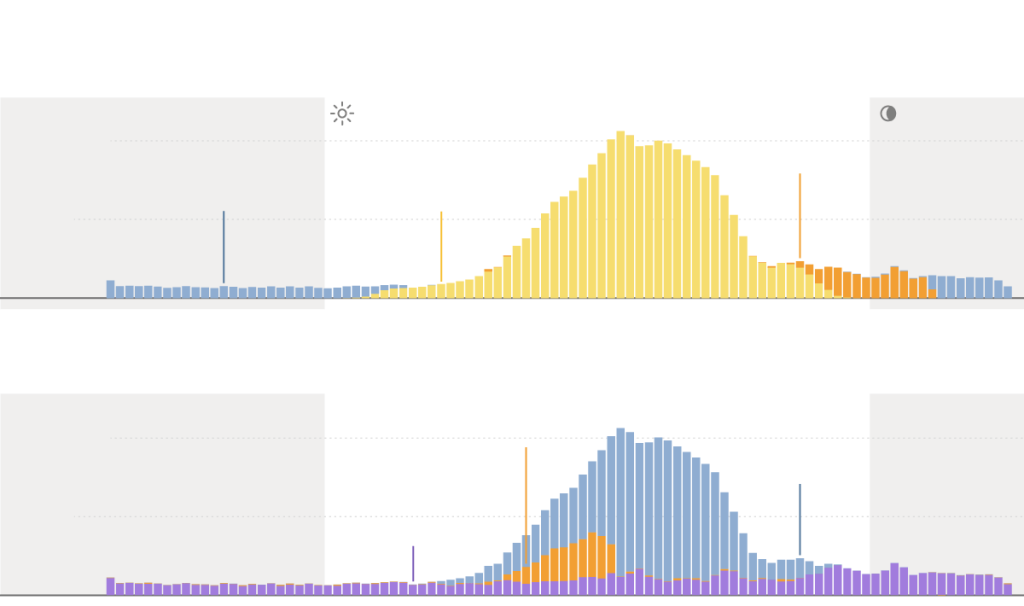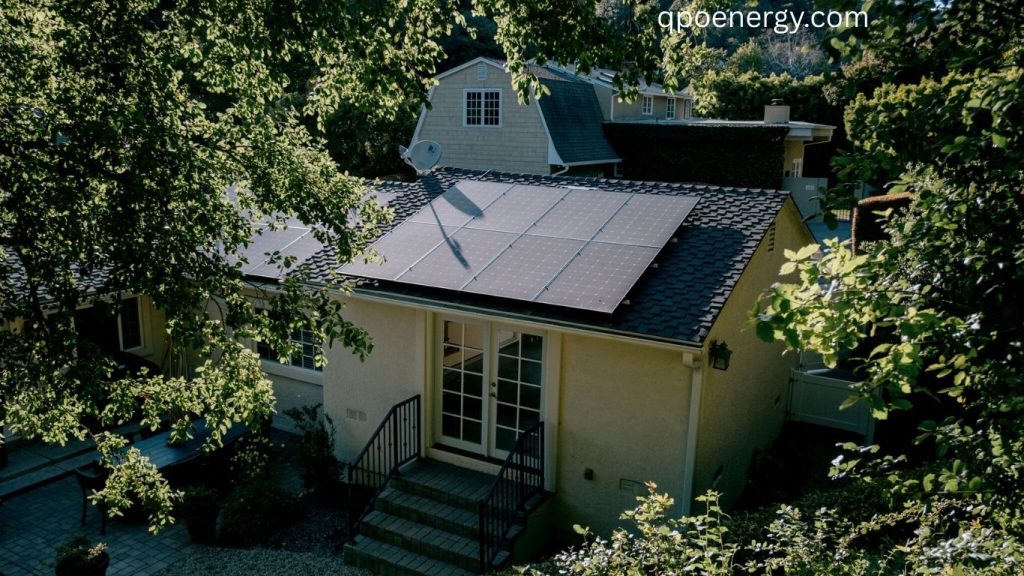For years, Dan Harrison’s Los Angeles home sat at the mercy of frequent power outages. Heatwaves, storms, or cold snaps could plunge his neighborhood into darkness for more than 10 hours at a stretch. Instead of waiting for utilities to fix the issue, Harrison took control.
Over the past six years, he invested in rooftop solar panels and batteries. Today, his home not only keeps the lights on for his family but also supports his neighbors near the University of California, Los Angeles. His story reflects a broader trend that may hold part of the solution to America’s growing energy crisis.
Read More: Last Chance Alert: Don’t Miss Out on Valuable Tax Credits for Home Energy Upgrades in 2025
America’s Strained Power Grid
Across the U.S., electric grids are under unprecedented pressure. Utility companies are pouring billions into upgrades, yet these investments push utility bills higher for consumers. Meanwhile, electricity demand continues to surge, fueled by data centers, electric vehicles, and climate-friendly appliances like heat pumps.
Adding new large-scale power plants, however, isn’t simple. Natural gas turbines are in short supply, wind and solar farms face community pushback, and nuclear plants take years to build. These hurdles leave policymakers and industry experts searching for faster, more flexible solutions.
One increasingly popular option: distributed energy systems like rooftop solar and home batteries.
How Rooftop Solar Changes the Game
Individually, a rooftop system might seem small. But collectively, these installations can function like virtual power plants, sending electricity back to the grid when demand spikes—such as on sweltering summer afternoons.
“This is a customer-led way to improve lives,” says Mary Powell, CEO of Sunrun, the nation’s largest rooftop solar and battery company.
Still, rooftop solar faces criticism. Some politicians, including former President Trump, dismissed renewable energy as unreliable while promoting fossil fuels. Even in California, regulators have scaled back incentives for residential solar in favor of utility-scale projects.
Despite these setbacks, consumer demand is booming as homeowners rush to take advantage of federal tax credits before they expire.
Harrison’s Energy Independence
To understand how rooftop solar truly works, consider Harrison’s home. Between July 2024 and June 2025, his panels produced about 13,700 kilowatt-hours of solar energy, sending more than two-thirds of it back to the grid. In contrast, he drew less than 4,000 kilowatt-hours from the grid.
Through a credit system, Harrison pays virtually nothing for electricity. Before solar, his utility bills totaled about $3,600 annually—savings he now enjoys year after year.
Morning to Night: A Home Powered by the Sun

- Morning: As the sun rises, Harrison’s panels start generating electricity. Some energy powers the household directly, while excess flows into his three wall-mounted batteries.
- Afternoon: When demand is low at home, surplus electricity powers nearby houses. His panels, like others in his neighborhood, act as mini power plants.
- Evening: As the sun sets, Harrison’s system switches to stored battery power. Even after dark, his family enjoys uninterrupted electricity while contributing energy back to the grid.
The Potential of Rooftop Solar
The National Renewable Energy Laboratory estimates rooftop systems could theoretically supply up to 74% of California’s residential electricity needs. Nationwide, smaller systems could nearly cut energy reliance in half in some states.
Rooftop solar has two key advantages:
- Speed: Installations can be completed quickly compared to large-scale projects.
- Efficiency: Energy is used locally, reducing transmission losses.
However, it’s not without drawbacks. Rooftop panels are more expensive per kilowatt than utility-scale solar. Batteries, while helpful, often provide only a few hours of backup power.
“The question is how do we meet growing demand?” asks Severin Borenstein, faculty director at UC Berkeley’s Energy Institute. “Utility-scale solar is cheaper, but distributed systems can fill critical gaps.”
A Virtual Power Plant in Action
Sunrun’s distributed power plant program highlights the potential of scaling rooftop systems. More than 130,000 enrolled systems supply enough capacity to power 480,000 homes. On June 24, during peak demand, Sunrun deployed half of that power to stabilize grids across California, New York, Massachusetts, Rhode Island, and Puerto Rico.
Even traditional utility leaders see value. “Part of the solution becomes the distributed power plant,” says Calvin Butler, CEO of Exelon. “Scaling rooftop systems strengthens resiliency without jeopardizing reliability.”
Policy Battles and Consumer Costs
Despite the promise, rooftop solar remains politically divisive. In 2023, California regulators sharply cut the value of credits for new installations, arguing that subsidies unfairly raised costs for renters and low-income households who couldn’t afford panels.
The challenge lies in balancing equity with innovation. Rooftop solar can reduce strain on the grid, but unchecked adoption could shift grid maintenance costs onto those without panels. Policymakers continue to debate how to distribute costs fairly while encouraging renewable adoption.
A Growing National Movement
Harrison’s decision mirrors a nationwide trend. Over the past five years, the number of American homes with rooftop solar has nearly tripled. Los Angeles alone has about 85,000 solar homes, with more added each year.
Still, many systems shut down during blackouts unless paired with batteries. For Harrison, the tipping point came in 2020 after enduring a 26-hour outage during Labor Day weekend. He soon invested around $14,000 in three batteries.
Now, his home provides peace of mind along with climate benefits. Even during outages, his lights stay on, and his system continues supplying neighbors.
Solar’s Role in America’s Energy Future
Today, solar generates about 7% of U.S. electricity, a figure expected to rise to 8% next year. Rooftop systems contribute only a fraction compared to utility-scale projects, but their role is growing. In California, utility-scale solar provides about 20% of electricity, with rooftops adding another 10%.
Energy experts believe the ideal future lies in combining both models: massive solar farms feeding cities and millions of rooftop systems adding resilience at the community level.
As Omar Nasser, founder of Treepublic Solar, puts it: “It’s the one-two punch you need to solve the climate crisis.”
Frequently Asked Questions:
How does rooftop solar help reduce America’s energy crisis?
Rooftop solar reduces pressure on the grid by generating local electricity. When combined with batteries, homes can supply power back to the community, lowering outages and cutting reliance on fossil fuels.
Can rooftop solar panels really power an entire home?
Yes, rooftop panels paired with batteries can cover most household needs. However, during extreme heat or cold, additional grid support is often required unless a system is oversized.
What are the main benefits of installing rooftop solar panels?
Homeowners gain lower utility bills, backup power during outages, reduced carbon footprint, and long-term energy independence.
What challenges limit rooftop solar adoption in the U.S.?
High upfront costs, reduced state incentives, regulatory hurdles, and limited battery storage remain major barriers to widespread adoption.
Is rooftop solar more effective than large solar farms?
Both have unique advantages. Large farms are cheaper per kilowatt, but rooftop systems deliver local power quickly, reduce transmission losses, and strengthen grid resilience.
How much can homeowners save with rooftop solar?
Savings vary by location, system size, and energy use. On average, homeowners save thousands of dollars annually by cutting or eliminating utility bills.
What is a virtual power plant, and how does it relate to rooftop solar?
A virtual power plant connects thousands of rooftop solar and battery systems, allowing them to act as one large power source that supports the grid during peak demand.
Conclusion
Dan Harrison’s Los Angeles home shows how one household can become more than just a consumer of electricity—it can transform into a contributor to the wider grid. Rooftop solar and battery systems may not be the single solution to America’s energy crisis, but they are a powerful part of the answer. By delivering clean, local, and reliable power, they reduce strain on aging infrastructure, lower utility bills, and offer resilience during outages. As energy demand continues to rise, the future will likely depend on a blend of large-scale renewable projects and millions of smaller systems like Harrison’s. Together, they represent not only a step toward sustainability but also a path to greater energy independence and security.


